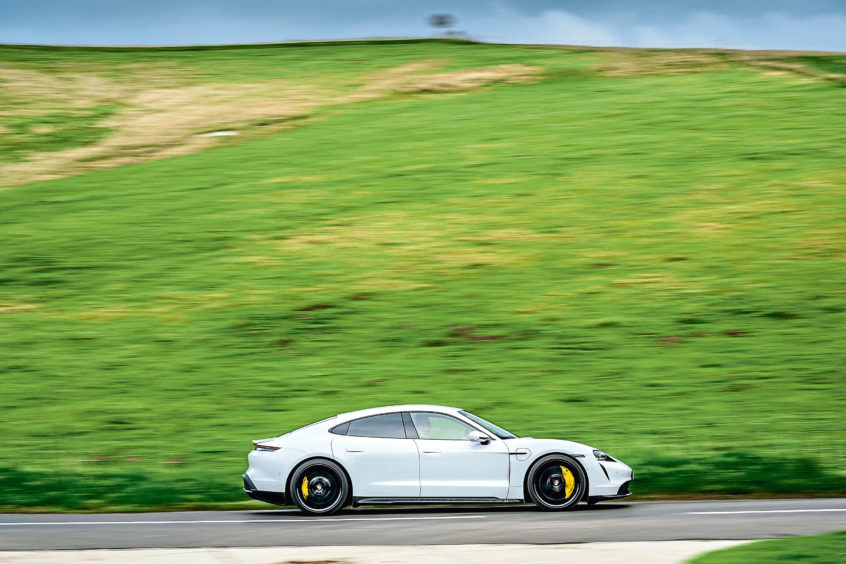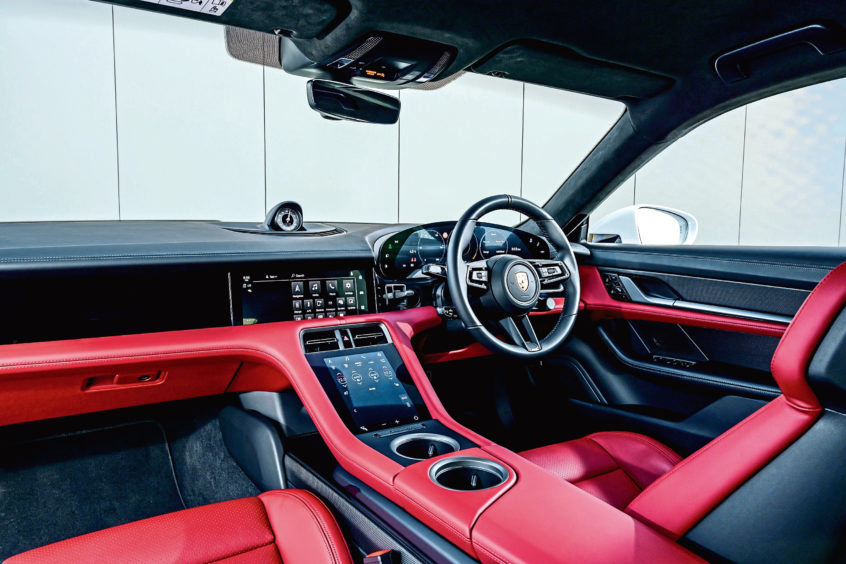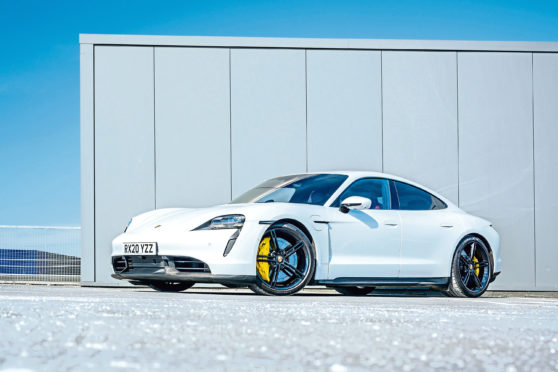The Taycan is Porsche’s first electric vehicle and the car that’s finally giving Tesla something to worry about.
It’s a big deal because when Porsche tries something new, it tends to succeed.
So with the Taycan in the UK for the first time, we took the Turbo S – the top-spec, top-performance version – on a mix of motorway miles and winding country roads, to see if it has that special Porsche something.
Not just Porsche’s first electric vehicle, this has been designed to be an electric vehicle from the ground up. So there’s no cramming of batteries and electric motors into engine bays – instead the powertrain has been integrated into the body to give a low and sleek silhouette, while the batteries being under the floor helps give the Taycan the lowest centre of gravity of any Porsche.

It is also the first production vehicle from any car maker to use an 800-volt system voltage, twice the typical amount for an EV, which has benefits at the charging pump. Using a DC fast charger, Porsche reckons you can add up to 60 miles of range in just five minutes, while charging from zero to 80% of the battery’s capacity takes about 22 minutes in ideal conditions. With peak charging power of 270kW and a maximum battery capacity of 93.4kWh, range anxiety is surely a buzzword of the past.
Performance comes from a pair of electric motors, one on each axle providing all-wheel drive, with a two-speed gearbox on the rear and a single-speed on the front. The result is 616bhp in normal driving with up to 750bhp available in Launch Control mode, while maximum torque is 1,050Nm. Zero to 60mph will come up in 2.6 seconds and the top speed is 161mph.
Those are incredible numbers, and they have an incredible effect on your body. Plant your foot on the accelerator from a standstill and you’re violently punched back into the seat as the car launches forward. It’s intoxicating and you can’t help but laugh out loud.
From the moment you set off in silence, it’s clear Porsche has worked hard to give you a feeling of quiet solidity – there are no squeaks or rattles in the cabin unmasked by the silent powertrain.
The control weights are perfectly judged between being light enough that you could drive it daily, but offering enough feedback that they give you confidence when pushing on.
There are five drive modes: Normal, Sport, Sport Plus, Individual and Wet. You’ll spend most of your time in normal, where it’s still silly fast but silent. Sport adds a little more electric whine, while Sport Plus unleashes maximum power.
Aside from the gut-wrenching acceleration, it’s the way the Taycan feels small and nimble on a country road that delights.
It looks like nothing else on the road; hunkered low to the floor with sleek curves, it’s wide but with a low roofline that makes it look like it’s hugging the Tarmac. The headlights have that signature Porsche quad-LED look, while the “air curtains” that drop down to the lower bumper almost look like fangs.
At the rear, the full-width LED bar gives a suitably futuristic light signature, and the simple curves mean it should age gracefully in a period where many cars are massively overdesigned.
Perhaps the only area we could find a hint of disappointment is the interior. It’s still a nine out of 10 kind of deal, with the infotainment menus slick and responsive and every material feeling like it has the utmost quality.
There’s a sense it’s built to last, too, while the seating position is nigh-on perfect. Meanwhile, rear passengers have a surprising amount of space.
However, the lower screen in the centre console looks a bit sparse with lots of unused screen space. Meanwhile, the graphics used throughout are dark and basic.
Furthermore, the standard steering wheel felt at odds with the car. It’s thin-rimmed and wrapped in an Alcantara-like Race-Tex material, feeling more like something out of a track-ready sports car.

While the “entry level” 4S starts at £83,367 and the Turbo starts at £115,858, we’ve been testing the Turbo S, which starts at £138,826. Our test car had a few choice options that took it over £150k.
This is a six-figure car, but Porsche has given it a six-figure spec list. Standard equipment on the Turbo S includes adaptive air suspension, 21-inch “Mission E Design” alloy wheels, carbon exterior inserts, LED Matrix headlights, two-zone climate control and much more.
At the best part of £140,000, the Taycan Turbo S is not a car you buy with any sort of consideration for your bank account. Even the base model is a good few grand more than an equivalent Tesla Model S. However, if the best is all that will do, then this electric Porsche is all that will do.
It looks like a spaceship, sounds like a spaceship and accelerates like one, too. It handles like a sports car, but emits no harmful gases, and you can fit three of your mates and their luggage inside to boot.
If you can look past the price, there really are few downsides.
THE FACTS
- Model: Porsche Taycan Turbo S
- Price: £138,826
- 0-60mph: 2.6 secs
- Top speed: 161mph
- Range: 254 miles
- CO2 emissions: 0g/km
